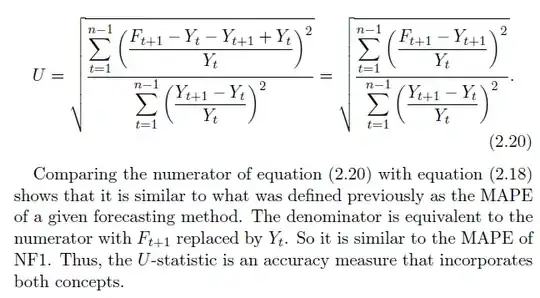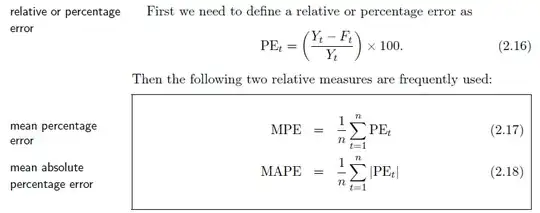I was reading "Forecasting Methods and Applications" book and came across Theil's U statistic formula. I am facing difficulty in understanding the interpretation of Theil's U statistic.
According to my understanding, when U = 0 the forecasts are perfect. That means if U>0 then forecasts are not perfect. As we keep increasing U, the forecasts will keep becoming more and more imperfect. When it reaches 1, it means Forecast is equivalent to Naive Method. Hence, a general pattern can be seen that as U increases forecast is wrong and at 1 forecast is same as naive and hence by extrapolating this we can say that if U>1 then the forecast is worse than naive method forecast, i.e. APE of the forecast is even bigger than naive method forecasts.
I am able to understand the above interpretation but when I dig deep into the formula, I am not able to understand the below lines from the book.

For simplicity, I am also attaching equation (2.18) -
I am not able to understand 2 things here -
How do numerator and denominator represent the MAPE formulas for a general forecast and naive approach forecast? This is because MAPE of any forecast is represented by this formula: MAPE = Mean of (sum of (Forecast - Actual)/Actual). Hence, if we follow this formula of MAPE in the numerator, then Y(t) should be Y(t+1) i.e. (F(t+1) - Y(t+1)) / (Y(t+1) (mentioned above). This is because if we are taking the forecast of (t+1) then every number in the formula should be of (t+1). The same is for the denominator.
Why are we taking t from 1 to n-1? Shouldn't it be t from 1 to n?
The reason I am asking this question is that I want to know the underlying premise or logic behind using this formula.
